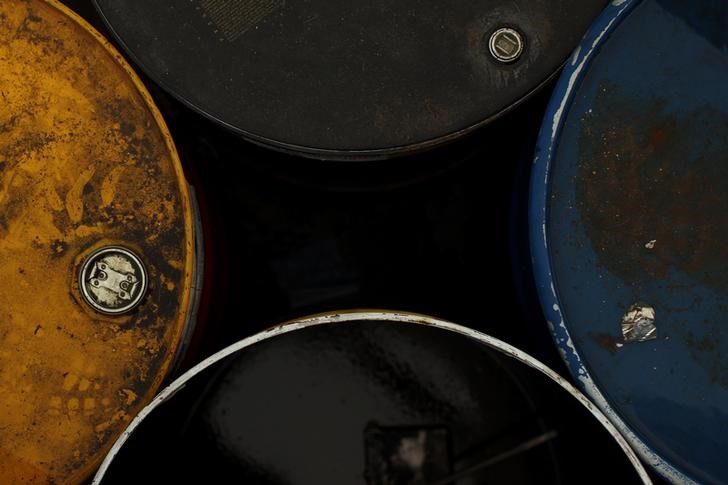LONDON (Reuters) - The North Sea crude market is at its strongest for almost four years, as demand for prompt-loading barrels has rocketed and supply remains slightly constrained by oilfield maintenance.
Forward rates, or contracts-for-difference (CFDs), on cargoes of North Sea crude oil loading in the next week, have hit their highest since late 2014, overtaking prices for cargoes loading further in the future.
That market structure is known as backwardation - often an indication of tight markets and low stocks - and is something OPEC has been striving to achieve this year with output cuts.
Strong refinery demand both in Europe and further afield has helped mop up an overhang of oil that was stored at sea when the structure of the physical forward market was in a contango, when prompt prices fall below those for future delivery.
CFDs for cargoes of North Sea crude loading next week are at a premium of nearly $1.00 a barrel to those loading in six weeks, a sure sign prompt availability in the physical market is tight.
"Brent CFDs themselves are steeply backwardated, particularly over the first three weeks of the curve, which has helped push dated Brent above ICE Brent and forward Brent," consultant JBC Energy said.
The North Sea produces the four benchmark grades -- Brent, Forties, Ekofisk and Oseberg -- that make up the dated Brent benchmark price, which sets the lion's share of the world's oil trades.
Most North Sea production is consumed by refineries in northwest Europe, mainly in Britain, Germany and the Netherlands. But flows beyond the region are gaining in importance.
"Arbitrage to Asia is likely also contributing to Forties' strength with talk of two October-loading VLCC voyages heard so far," JBC added.
China has replaced South Korea as the largest non-European consumer of North Sea oil, having nearly doubled its intake of North Sea crude to about 52 million barrels this year.
So far in 2017, some 454 million barrels of North Sea crude have been loaded on to ships, or about 1.72 million bpd, compared with about 436 million barrels, or 1.65 million barrels per day (bpd), at this point last year.
Trading house Glencore (LON:GLEN) has been an avid buyer of Forties crude in the past few weeks. The trader is thought to own at least nine of the 18 600,000-barrel cargoes that make up the September supply programme.
Glencore, which has booked the VLCC Ingrid to take Forties to South Korea next month, has also bought another four cargoes due to load in October.
It is not uncommon for operators in the North Sea market to build up large holdings of physical oil for operational reasons, to supply customers or feed their own refineries.
But this can create a dearth of prompt-loading crude and push up near-term delivery prices fairly aggressively.
Shell (LON:RDSa) has tentatively booked the Daba to carry another 2 million barrels of Forties east in October, while at least three VLCCs will make the trip this month, according to trading sources and Reuters data.
